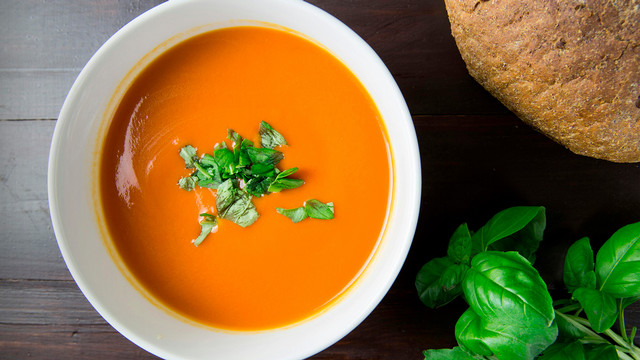Healthful Fall Favorites: chemistry expert explains how your top fall foods & side dishes can be delicious and nutritious
Expert Alert
With the changing of the leaves and cooler weather comes a favorite fall hobby, fall cooking. A key staple in people’s kitchens, cooking with fall flavors and ingredients means a season of spices, holidays, and tasty goodness. And what if your favorite fall dishes could also be made nutritionally effective?
Chemistry professor Julie Pollock teaches about the effective use of science in cooking to maximize vitamins and minerals for the body. As a biochemist, she details how using certain fall foods, such as orange vegetables and dark, leafy greens, along with specific cooking instructions, can not only maximize the flavor of the fall meals we all know and love but also their nutritional value.
What are some key nutrients found in popular fall side dishes?
Dr. Pollock: Side dishes, usually including leafy greens or colorful vegetables, are made up of many chemical substances crucial for human growth and development. The main component is nutrients, which keep the overall body functioning. The subsections are then macronutrients, such as carbohydrates, fats, and proteins, and micronutrients, like vitamins and minerals, which assist with all other body activities. Examples include muscle movement and bone health derived from the mineral calcium, enhanced immune response from vitamin C, and even improved nerve response through potassium. The macro and micronutrients in fall side dishes are very important, as they allow humans to operate in a healthy way. However, that is only if these dishes are prepared properly.
What are some examples of nutritional fall side dishes?
Greens, such as collard greens, kale, spinach, or even green beans, are great sources of magnesium and calcium, two major minerals necessary for muscle movement and bone health. Greens are also a source of iron, which is a key human component that stores oxygen in the body and helps generate energy. Orange vegetables — carrots, pumpkin, sweet potatoes, and squash — contain calcium, iron, as well as high levels of potassium. This mineral is important for muscle movement and maintaining low blood pressure. Lastly, white potatoes are a strong fall side, as they contain both potassium as well as vitamin B6. This creates healthy blood cells and even helps produce serotonin and dopamine, which regulate people’s pleasure and happiness.
What cooking methods enhance nutritional value?
While consuming vegetables with micronutrients is important, it’s just as important that your body absorbs them properly and can transport them to the cells that need them. Macronutrients, like fats and proteins, absorb easily into the bloodstream, whereas only about 3-10% of micronutrients will get distributed throughout your body. It’s important when cooking or preparing fall side dishes to include macronutrient-rich foods with them. For example, cooking greens with a source of fat — olive oil, avocado oil, butter, or even a little bacon grease — packages the rich vitamin K greens with chemical structures that move them around the bloodstream. Plus, the high amounts of iron found in greens can only be utilized if attached to a necessary absorption tool called a heme. This is naturally found in animal products, but with the addition of vitamin C, such as a squeeze of lemon or lime juice, it can be increased in non-animal products to where both the flavor of the dish and its micronutrients are enhanced.
What easy fall meal would you recommend that’s high in vitamins and minerals?
Soup is a perfect example of a great fall dish that is packed with both flavor and nutrition. Made up of colorful vegetables, leafy greens and macronutrients in ingredients like cream or olive oil, soup tastes good and is good for you. Pro tip: roast the vegetables or greens before adding them to the soup. This creates both a deeper level of flavor and an overall heartier, thicker soup.
Is there a fun, healthy cooking hack that might surprise people about food nutrition?
Overcooking can ruin not only flavor but nutritional value. If you overcook your meal, it breaks down the heat-sensitive nutrients, such as vitamin C, to where they become unusable for the body’s function. A gentle simmer or sauté, on the other hand, not only keeps the vitamins and minerals intact but also preserves the overall flavor of the food. So be careful how hot and quickly you cook.
